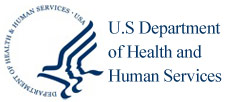
Funding will Help Provide Rural Health Care, Emergency Response Services and Long-Term Disaster Recovery
United States Department of Agriculture (USDA) Deputy Under Secretary for Rural Development Justin Maxson announced that USDA is investing $185 million to equip, rebuild, and modernize essential services in rural areas of 32 states. The investments will benefit 3 million rural residents. In Pennsylvania, USDA is investing a total of $955,730 in 16 projects through the Community Facilities Direct Loan and Grant Program.
“The Biden-Harris Administration has made investing in infrastructure improvements a priority,” Maxson said. “These loans and grants will help rural communities invest in facilities and services that are vital to all communities, such as schools, libraries, hospitals and health clinics. They also will help rural communities continue to beat the COVID-19 pandemic as America builds back better and stronger.”
USDA Acting State Director for Rural Development in Pennsylvania Jeremy Wilson said, “These loans and grants help emphasize the fact that USDA is not just here to help farmers and agricultural producers, but the communities where they live.”
Below are descriptions of the projects:
- Kingston Borough is receiving a $26,500 grant to purchase radios and accessories for their emergency services. This purchase is needed to allow the borough to be compliant with the upgraded system in Lycoming County. Without the new equipment, the borough would not be able to communicate with regional emergency services.
- Kline Township is receiving a $27,100 grant to purchase a patrol vehicle and equipment for the township’s police department. The township currently uses a 2013 patrol vehicle that is in poor condition, frequently breaks down and needs repair, resulting in loss of services to the community.
- Benezette Township is receiving a $30,700 grant to purchase a pickup truck for environmental operations and street maintenance. The new truck is needed because the township’s current trucks have plows and spreaders, which don’t allow the maintenance department to address issues such as fallen trees, road repairs and other tasks.
- Grand Canyon Airport Authority is receiving a $5,100 grant to purchase a self-serve fueling terminal at the Grand Canyon Airport in Wellsboro. The terminal will allow 24/7 fuel access to customers and is essential for a small airport, which cannot sustain 24-hour operations. The 20-year old existing system is incompatible with current and emerging technology and the existing manufacturer is no longer providing software, replacement parts or technical support.
- Keating Township is receiving a $50,000 loan and $27,400 grant to purchase a dump truck with a snowplow and cinder spreader that will be housed at the township office located in Potter County. The township’s current street maintenance vehicle has numerous mechanical problems that have been costly to repair. A new truck is needed to provide reliable maintenance to the blacktop and gravel roads throughout the township.
- Montgomery Borough is receiving a $25,600 grant to purchase a mini excavator. This equipment is needed because the borough’s current backhoe is 15 years old and needs repairs. The excavator will allow the borough to provide maintenance to small spaces the backhoe cannot access. With the new equipment in use, the borough will be able to repair its current equipment without any delays in service.
- Friendship Fire Company is receiving a $330,500 loan and $50,000 grant to purchase a fire truck that will be housed in Port Royal. The fire company currently owns a fire and rescue truck that is too costly to maintain.
- Youngsville Borough is receiving a $21,200 loan and $25,700 grant to purchase a new patrol vehicle. The borough’s police department currently owns two patrol vehicles; however, one has had significant mechanical issues resulting from a crash in 2019. The new vehicle will allow the police department to provide a more reliable service to the community.
- Dean Township is receiving a $16,300 loan and $50,000 grant to replace the roof of the township’s facility located in Cambria County. The roof has an active leak and additional damage is expected to be found during the replacement.
- Citizens Ambulance Services Inc. is receiving a $50,000 grant to purchase 16 stretcher mounting systems, 17 stretcher conversion kits and 22 battery kits for a fleet of 16 ambulances located in Indiana, Pa. The equipment is needed to follow the federal specifications that require any ambulance manufactured after July 1, 2015, to be equipped with the new loading systems. Citizens Ambulance Services Inc. has not purchased new ambulances since that date and have purchased used units with 30,000 to 155,000 miles and refurbished them.
- Springfield Township is receiving a $43,330 loan to purchase a new maintenance truck. This truck is needed because the township’s current vehicle is 14 years old and nearing the end of its useful life. The new truck will enable the township to plow snow and haul tools and materials to job sites.
- Selinsgrove Borough is receiving a $50,000 grant to purchase a new patrol car and leaf loader. The new patrol vehicle will allow the police department to service the borough and provide a safer environment for the community, while the new leaf loader will allow the borough to maintain the roadways.
- Avenues, located in Pottsville, is receiving a $17,000 grant to replace the facility’s original boiler. The new boiler is situated within the existing area of the old boiler on the existing slab. The existing facility is the applicant’s point of service site. The facility’s boiler was approximately 48 years old. Avenues provides human services to individuals with developmental and acquired disabilities.
- Mount Union Borough is receiving a $12,800 loan and $40,000 grant to purchase a new pickup truck. The vehicle will be used by the Water and Sewer Department to provide maintenance on the reservoir and wells in the area. The existing pickup is too costly to maintain.
- Fulton County Library is receiving a $18,800 grant for facility renovations. The project includes repainting interior walls and trim, repainting exterior walls with the stucco and block being primed and redone. The security system will be upgraded, and four additional cameras will be added.
- East Pittsburgh Borough is receiving a $37,700 grant to purchase a new skid steer loader. The borough does not own a skid steer and instead rents equipment from neighboring municipalities. The new equipment will allow the borough to perform routine maintenance on roads and public areas.
More than 100 types of projects are eligible for Community Facilities funding. Eligible applicants include municipalities, public bodies, nonprofit organizations and federally recognized Native American tribes. Projects must be in rural areas with a population of 20,000 or less.
To learn more about Community Facilities Program funding opportunities, contact a USDA Rural Development state office. Also see the Community Facilities Direct Loan Program Guidance Book for Applicants (PDF, 669 KB) for a detailed overview of the application process.
Under the Biden-Harris Administration, Rural Development provides loans and grants to help expand economic opportunities, create jobs and improve the quality of life for millions of Americans in rural areas. This assistance supports infrastructure improvements; business development; housing; community facilities such as schools, public safety and health care; and high-speed internet access in rural, tribal and high-poverty areas. For more information, visit www.rd.usda.gov. If you’d like to subscribe to USDA Rural Development updates, visit our GovDelivery subscriber page.
USDA touches the lives of all Americans each day in so many positive ways. In the Biden-Harris Administration, USDA is transforming America’s food system with a greater focus on more resilient local and regional food production, fairer markets for all producers, ensuring access to safe, healthy and nutritious food in all communities, building new markets and streams of income for farmers and producers using climate smart food and forestry practices, making historic investments in infrastructure and clean energy capabilities in rural America, and committing to equity across the Department by removing systemic barriers and building a workforce more representative of America. To learn more, visit www.usda.gov.





